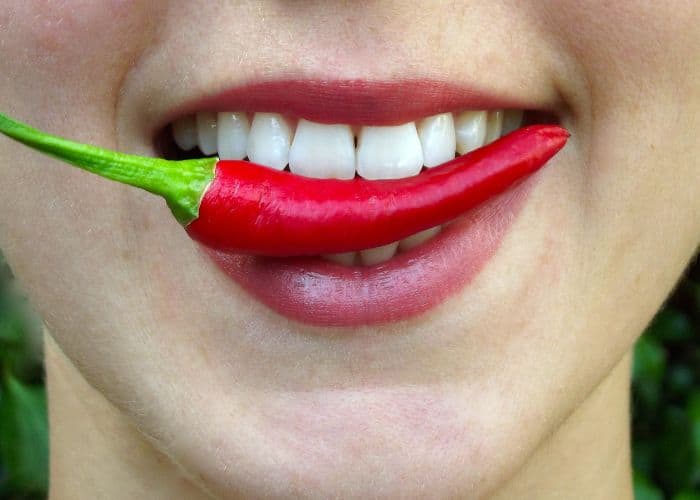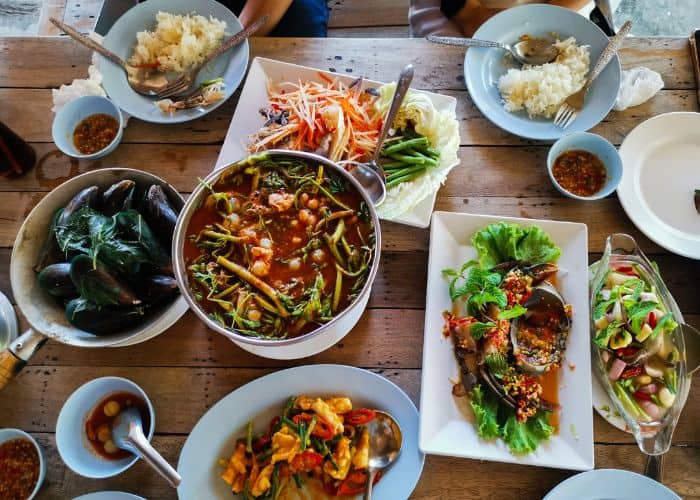Regarding spicy foods, there’s always a debate about what’s hotter, mild, or medium. For some, mild sauces or dishes are too spicy, while others can easily handle the heat of a medium dish. However, the perception of spiciness can vary greatly from person to person, making it difficult to determine a clear winner in this debate.
In this article, we’ll dive into the science behind spiciness and explore what makes a sauce or dish mild or medium.
By the end, you’ll have a better understanding of the heat of spicy foods and may even be inspired to try some new and spicier dishes.
What’s hotter, mild or medium?

The answer to this is subjective and depends on an individual’s tolerance for spicy food.
Mild dishes are less spicy than medium ones, but the level of spiciness can still vary greatly within the mild category.
Factors affecting one’s perception of spiciness include age, gender, genetics, and even previous exposure to spicy foods.
Ultimately, what’s hotter, mild, or medium, is a matter of personal preference and tolerance for spicy food.
It’s important to note that while the Scoville scale is commonly used to measure the spiciness of foods, it has limitations and doesn’t always reflect an individual’s perception of spiciness.
Capsaicin, the chemical compound responsible for the heat in spicy foods, interacts with pain receptors in the mouth and throat, which can result in a burning sensation.
Some people may enjoy this sensation, while others may find it unpleasant or even painful.
Additionally, building up a tolerance to spicy foods over time can affect an individual’s perception of spiciness and what they consider to be mild or medium.
Five Levels of Heat of a Pepper Scoville Scale

The Scoville scale measures the heat level of spices, with a higher Scoville rating indicating a spicier spice.
The heat is measured in Scoville Units, named after Wilbur L. Scoville, an American pharmacist, and scientist who developed the measurement in 1912.
The scale measures the amount of capsaicin – the chemical compound responsible for spiciness in peppers – present in each pepper variety.
This rating system measures a pepper’s “hotness” or spice level, helping people identify how hot and spicy they can expect a certain type of pepper.
Level 1: Mild Peppers
At the low end of the heat scale are mild peppers, such as a bell or sweet banana peppers, with a rating of 0-500 Scoville heat units (SHU).
These peppers contain very little capsaicin, so they’re virtually flavorless with no real kick or spice.
These are perfect if you want to add some flavor but don’t want any heat!
Level 2: Medium Peppers
At 500-2,500 SHU, we find medium peppers such as jalapeños or poblanos.
These have just enough capsaicin to give them some flavor and just a hint of heat that is noticeable but not overwhelming.
They are often used in Mexican dishes such as tacos or burritos, adding just enough spice without overwhelming other flavors.
Level 3: Hot Peppers
Hot peppers range from 2,500-10,000 SHU and include varieties like habaneros, cayenne peppers, and serranos.
These pack much more punch than milder varieties, with their distinct spicy flavor that will make your taste buds stand up and take notice!
They carry some risk; if you’re not careful, you could quickly find yourself taking too big a bite!
Level 4: Very Hot Peppers
Very hot peppers range from 10,000-100,000 SHU and include red savinas and ghost chilis.
These are often used sparingly due to their intense heat.
Even those who love spicy foods should proceed cautiously when using these peppers!
Wear gloves and wash your hands thoroughly afterward.
Level 5: Extremely Hot Peppers
At 100,000+ SHU, we find the world’s hottest pepper varieties like Carolina Reapers or Ghost Chilis.
Unless you’re an absolute masochist regarding spiciness, there’s no good reason to try one.
Even professional chili eaters normally refrain from trying these unless they’ve been specifically prepared for competition.
If you decide to take on one of these monsters, ensure you have plenty of milk in hand – otherwise, you may be in for an unpleasant surprise!
What is the difference between these two levels of spice?

Mild
Mild sauces or dishes are low on the heat scale and are considered suitable for individuals with a low tolerance for spicy food.
Mild dishes may have some spiciness, but it’s usually subtle and doesn’t overpower the other flavors.
The heat in mild dishes can come from mild chili peppers, paprika, or other mild spices.
Mild dishes are a good starting point for individuals who are new to spicy food or want to enjoy a dish’s flavors without the heat.
Some mild dishes include mild salsa, mild curry, or mild chili.
Medium
Medium dishes have a moderate level of spiciness and are a step up from mild dishes.
Medium dishes are suitable for individuals who have some tolerance for spicy food and enjoy a bit of heat in their meals.
The heat in medium dishes can come from medium chili peppers, cayenne pepper, or other moderately spicy spices.
Medium dishes usually have a balance between the heat and other flavors in the dish, so the spiciness doesn’t overpower the other ingredients.
Some examples of medium dishes include medium salsa, medium curry, or medium buffalo wings.
What are the different levels of spice or heat?

Including the Mild and Medium, there are two more levels to it. These are hot and extra hot, and they can be above your tolerance level.
But some people might love these, and mild or medium is just ordinary for them. So, let’s dig deeper into it to see what’s hot and extra hot.
Hot
Hot dishes have a high heat level and are suitable for individuals with a high tolerance for spicy food.
The heat in hot dishes can come from hot chili peppers, chili powder, or other hot spices.
Hot dishes usually have a bold and strong flavor, but the spiciness can be overpowering for those with a low tolerance for spicy food.
Some hot dishes include hot salsa, hot curry, or hot wings.
Hot dishes are one step above medium and are popular among individuals who have a high tolerance for spicy food.
Some hot dishes, such as hot wings, combine hot sauce and butter to balance the heat and create a savory flavor.
It’s important to note that while hot dishes are popular among spice enthusiasts, they can cause discomfort for those with sensitive stomachs, heartburn, or acid reflux.
Extra Hot
Extra hot dishes have an extremely high heat level and are suitable only for those with a very high tolerance for spicy food.
The heat in extra-hot dishes can come from the hottest chili peppers, habanero, ghost pepper, or other extremely hot spices.
Extra hot dishes are known for their intense and overpowering heat, and they are not for those who are sensitive to spicy food.
Some examples of extra hot dishes include extra hot salsa, extra hot curry, or extra hot wings.
It’s important to approach extra hot dishes with caution and have a glass of milk or some bread nearby to help cool down the heat.
While extra hot dishes are not for everyone, some people enjoy the adrenaline rush and the endorphin release that comes with eating spicy food.
Why are spices necessary for food?

Spices are an essential part of cooking, and they serve several purposes in food.
Firstly, spices add flavor to food by enhancing the taste and aroma of the ingredients.
They can also balance out the taste of the dish by adding sweetness, bitterness, or acidity.
Secondly, spices are known to have several health benefits.
They can improve digestion, boost the immune system, and have anti-inflammatory properties.
Finally, spices are used to preserve food by inhibiting the growth of bacteria and fungi.
However, it’s important to consume spices in moderation and gradually increase your food’s heat level to avoid overwhelming your taste buds.
Conclusion
In conclusion, we advise you always to use spices in the proportions that best suit you.
Then, determine how much heat you can tolerate by tasting and eating the dish.
This post has provided you with some useful information on the differences between mild and medium spice levels, as well as various degrees of heat.
We hope this article helped you know what’s hotter, mild, or medium.
Stay connected for more.

